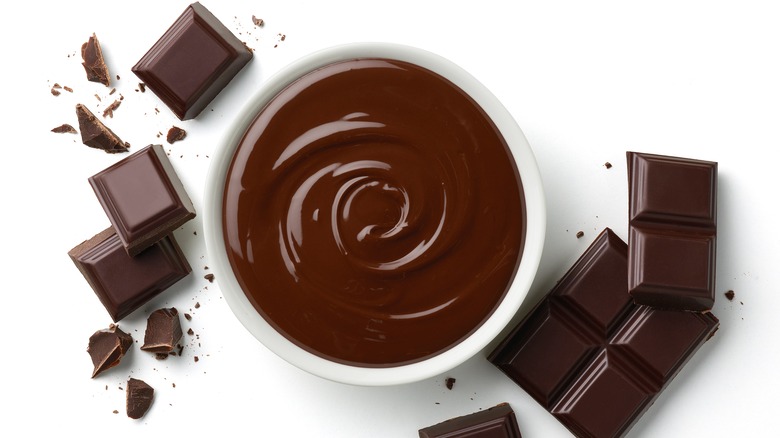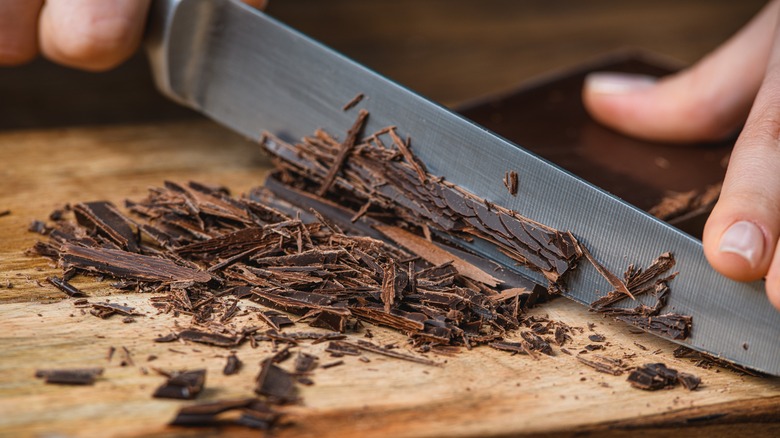The Reason You Should Chop Chocolate Before Melting It
Whether you're planning to make a classic chocolate layer cake, a crunchy chocolate almond bar, or a rich and decadent ganache, at some point, your recipe will call for you to melt some chocolate. Whether you prefer to use the traditional double boiler, the microwave, the top of your oven, or even a hair dryer to do the actual melting, there's one very important step you need to take before you get to that point, and that is to chop up your chocolate first (unless you're using chocolate wafers that are already the same size). While this may seem like an extra, unnecessary, and potentially dangerous step (depending on your knife skills, or lack thereof), there's a very good reason you don't want to skip it.
According to The Spruce Eats, chopping your chocolate into small and uniform pieces will not only make it melt faster and more evenly, but it will also make it less likely for your chocolate to overheat. Chocolate can be very delicate when exposed to heat — milk and white chocolate needs to stay under 110 F while dark chocolate needs to stay under 120 F. The result of overheating chocolate? A "dull, thick, muddy" mess that's lumpy and unappetizing, and not ideal to use in any recipe.
Tips on how to chop chocolate
There are three tools that you can use for chopping chocolate: a chocolate chipper (most useful for large, bulk blocks of chocolate), a heavy chef's knife, or a long serrated knife, per The Spruce Eats. In all cases, you should start at the corner of the chocolate bar and work your way in until all of the chocolate has been cut. Food52 also recommends cutting chocolate to specific sizes depending on the type: if you're working with milk and white chocolate, which can burn easily, you should chop them into matchsticks or thin shards thinner than ¼ inch, while you can chop dark chocolate into bigger chunks.
Real Simple also has some tips on how to make chopping chocolate easier, including warming your chocolate bar in the microwave in 10-second intervals until the corners start to shine, using a serrated knife to better "grab" the surface of smooth chocolate bars, and anchoring your cutting board with some damp paper towels or thin cloths underneath to keep it in place.

